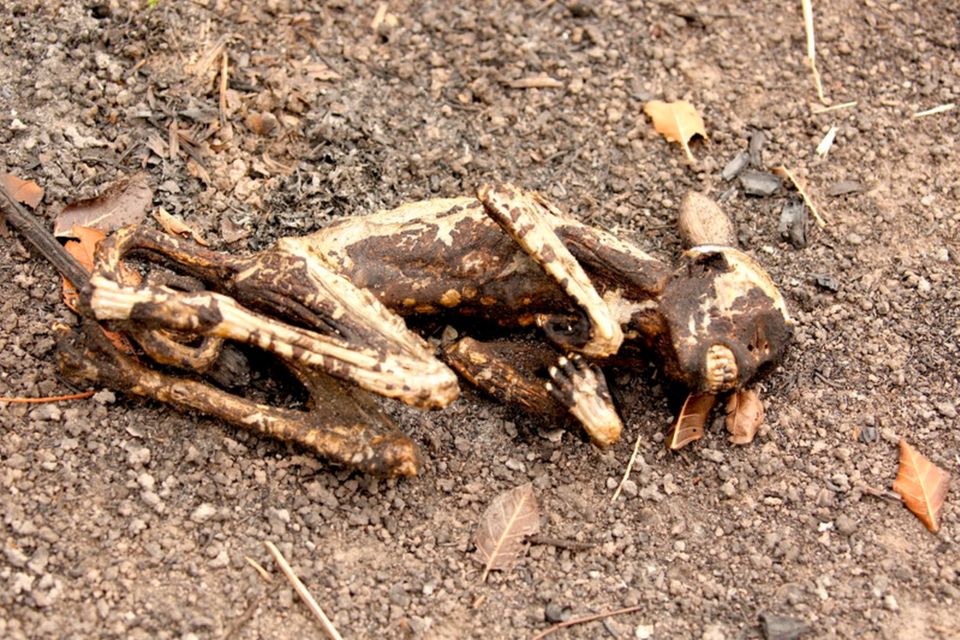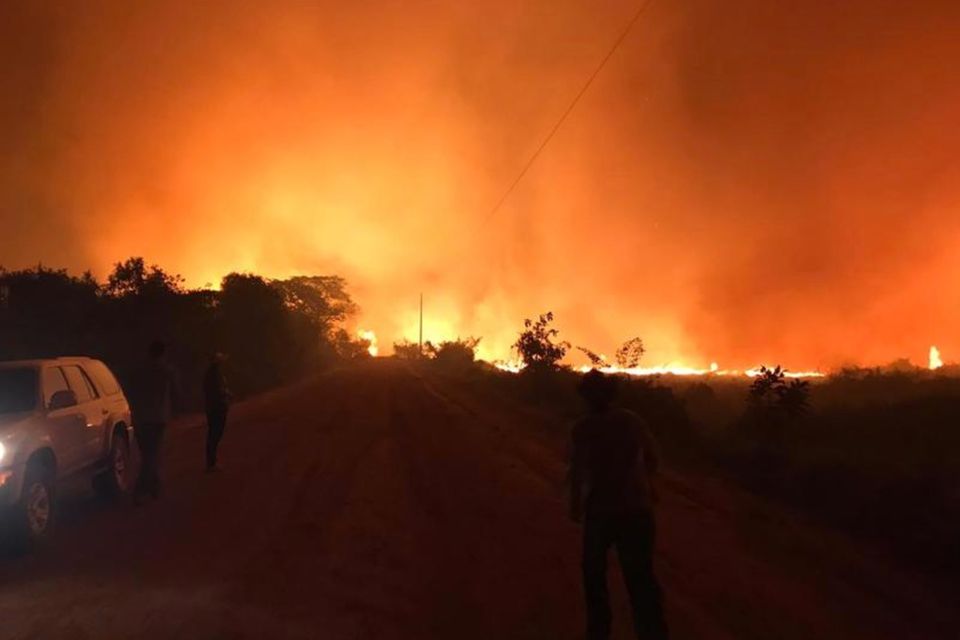South America
At least 17 million vertebrate dead after forest fires in the Pantanal
– This dead toucan is one of the victims of the devastating 2020 fires in the Pantanal © Lawrence Wahba Foto: Lawrence Wahba
–
–
Many animals have no chance against fire. After the devastating fires in 2020 in the Pantanal, researchers are taking stock of the number of dead vertebrates. It’s terrifying – and very likely an understatement.
–
At least 17 million vertebrates died as a direct result of the devastating fires in the South American Pantanal, one of the largest inland wetlands on earth. These included snakes, small rodents and birds, but also larger animals such as pouches, girdles and ungulates. This is what researchers report in the specialist magazine “Scientific Reports” after counting the carcasses on the burned area. The actual number of animals killed is presumably much greater because, for example, species living underground or animals that have been completely burned or hidden under ashes cannot be found.
The Pantanal is located in the center of South America and, according to the researchers, covers a total area of 179,400 square kilometers. That corresponds to about half the area of Germany. The largest part of the wetland (78 percent) belongs to Brazil, the remaining part is in Bolivia (18 percent) and Paraguay (4 percent). The biodiversity in the region is immense, there are more than 580 bird species – more than in all of Europe. The area is also home to at least 174 species of mammals, 131 reptiles, 269 fish, 57 amphibians, and more than 2000 species of plants.
The farmers traditionally burn down forest areas The remains of a capuchin monkey in the South American Pantanal – in 2020 more than 39,000 square kilometers were affected by fires between January and November © Lawrence Wahba Foto: Lawrence Wahba
Cattle farming is the main economic activity in the area. The farmers traditionally burn down forest areas to create new pastures. If these fires get out of hand, huge wildfires can develop. Climate change increases the risk of fires considerably, writes the team led by Walfrido Moraes Tomas from Embrapa Pantanal, a research institute of the Ministry of Agriculture in Brazil. Finally, inadequate landscape management strategies are also a driving factor behind the increasing frequency and intensity of catastrophic fires.
Above all, the accumulation of extreme droughts is associated with a growing frequency of forest fires in other regions of the world. For the Pantanal, a decrease in rainfall, higher temperatures and more extreme weather events are expected in the course of climate change. In 2019, more than 16,000 square kilometers were burned there, and in 2020 more than 39,000 square kilometers were affected by fires between January and November. 16 million small vertebrates burned
The researchers searched the affected regions along 126 longitudinal paths through the area for up to 48 hours after a fire for the carcasses of animals. They found a total of 302. For most of them they could determine the species or genus. Extrapolated to the total area, the result was a number of 16 million small vertebrates burned with a weight of less than two kilograms. In addition, there are almost a million medium to large vertebrates such as caimans, anteaters, primates and ungulates.

–
–




